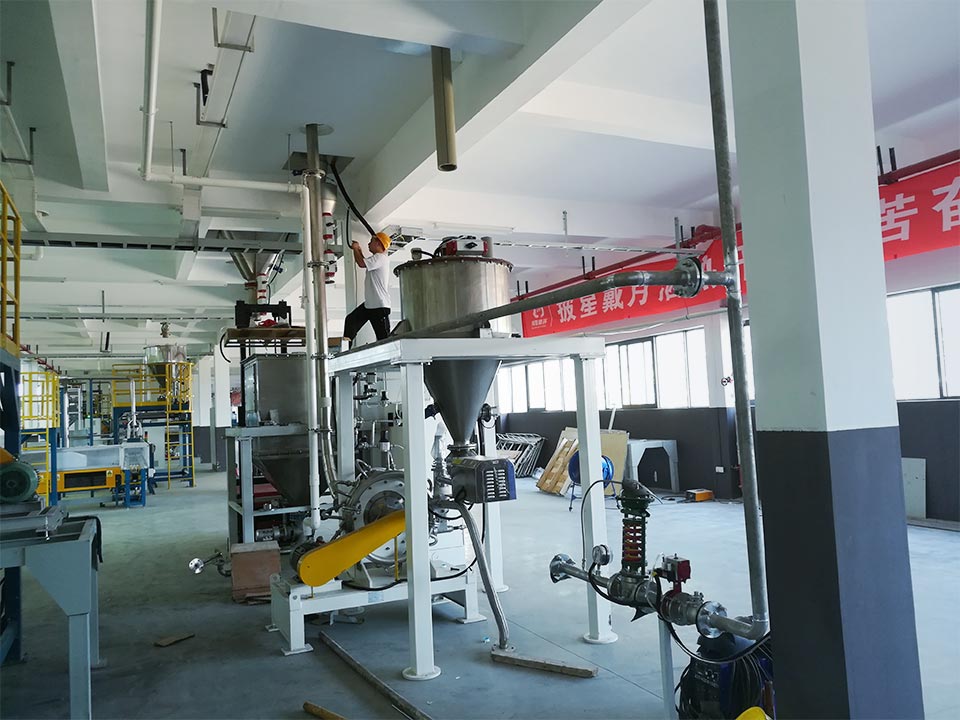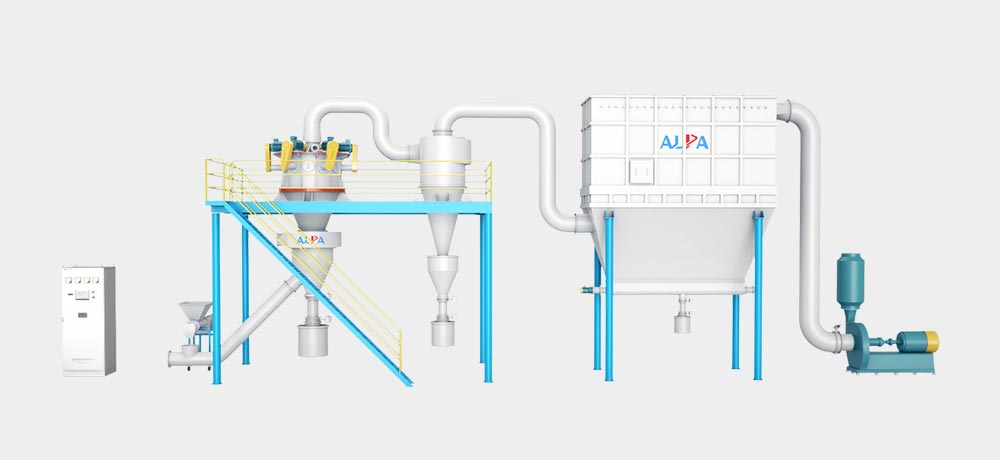The particle size of the air classifier can be adjusted freely, with high precision and high efficiency
The particle size distribution of ternary materials will affect the specific surface area, compaction density, pole piece processing performance and electrical performance of the battery. The grinding equipment can only control the particle size of the material, but it cannot control the particle size distribution of the material. If you want to control the particle size distribution of the material, you must use a grading device. The classification of ternary materials is generally followed by the airflow pulverizer with an airflow classification device to directly classify the crushed products. The airflow classifier is related to the quality of the final product of the ternary material.

The classifier, cyclone separator, dust collector, and induced draft fan form a set of classification system. Under the action of fan suction, the material moves to the classification area at high speed from the lower inlet of the classifier along with the updraft. Under the strong centrifugal force generated by the high-speed rotating classification turbine, the coarse and fine materials are separated, and the fine particles that meet the particle size requirements are classified. The gap between the wheel blades enters the cyclone separator or the dust collector to collect, the coarse particles entrained by the part of the fine particles hit the wall and the speed disappears, and they descend along the cylinder wall to the secondary air outlet. After the strong elutriation of the secondary air, the coarse and fine particles are separated. The particles rise to the classification zone for secondary classification, and the coarse particles fall to the discharge port for discharge.

The structural characteristics of the ternary material air classifier:
(1) Under the action of the high-speed rotating impeller, the pressure of the gas flowing through the impeller increases. After the high-pressure airflow flows out of the impeller, it passes through the injection fine-particle ring. Because the blades of the rotating guide vane are designed to be curved, the cross-sectional area of the inlet is Larger, the outlet cross-sectional area is small, so the airflow pressure at the outlet decreases, the speed increases, and it flows out in a rotating direction, which is conducive to classification.
(2) The grading point adjustment mechanism is equipped with three adjustment rods, and a chain is used to keep it moving in sync. The adjustment lever moves upward. The fine powder increases; when the adjusting lever moves down, the fine powder decreases. The classification point can be continuously adjusted steplessly. The particle size of the air classifier with better performance is steplessly adjustable. The particle size of the classified product can reach D97: 3 ~ 150 microns, which is suitable for the fine classification of dry micron products.
(3) Control ring setting: The control ring is to ensure that a suitable cross section is formed between the control ring and the injection fine particle ring, and the flow rate of the control air flow is stable.
(4) The residual air vent will inevitably bring in excess gas from the dry materials, and the temperature in the classification room is higher, and the air will expand. Therefore, a residual air vent is designed to maintain a stable and balanced air flow in the classification room.
